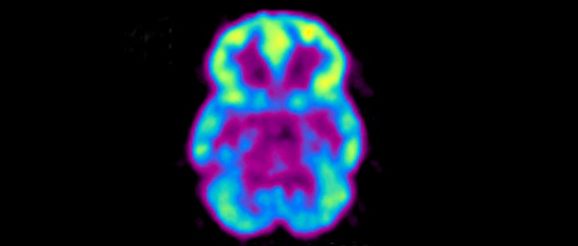At BNL, an energetic history of medical innovation


By TOM MARINER //
Upton-based Brookhaven National Laboratory is a national treasure operating at the forefront of energy science – but it’s also made profound contributions to medical sciences.
 One of 17 national laboratories funded by the U.S. Department of Energy, BNL boasts current research in nuclear and high-energy physics, environmental science, bioscience and all manners of energy technology – exactly what you’d expect DOE-managed facility.
One of 17 national laboratories funded by the U.S. Department of Energy, BNL boasts current research in nuclear and high-energy physics, environmental science, bioscience and all manners of energy technology – exactly what you’d expect DOE-managed facility.
But it also explores unique applications to national security – and for much of its 75-year history has been extremely active in medical-imaging research, including science centered around the first U.S. reactor specifically tailored to medical research (the Brookhaven Medical Research Reactor, which operated until 2000).
Much of BNL’s medical exploits were witnessed – and often directed – by David Schlyer, now the laboratory’s senior scientist emeritus. Schlyer, a chemist, arrived in Upton 45 years ago via the University of California and worked his way from “worker bee postdoc” (his words) to acting chairman of BNL’s Medical Department, then finally chairman of BNL’s Biosciences Department.

Tom Mariner: Image conscious.
His arrival coincided with BNL’s ramping up of practical nuclear medicine, an area of medical-imaging radiology that uses tiny amounts of radiopharmaceuticals to examine organ function and structure.
The idea was to use the lab’s nuclear facilities to create unstable radionuclides that emit particles and can be detected in the body after injection. The challenge was that these compounds can be dangerous and lose their emitting “strength” over time – meaning researchers needed a way to allow them to migrate to the proper area, remain active long enough to image and then deactivate before damaging the host.
One promising compound was fluorodeoxyglucose, a form of radioactive sugar useful for the identification of cancers. Because FDG loses half its emitting power every 109.7 minutes (its half-life) and cooperative research was sited at a facility in Pennsylvania, Schlyer would hand-deliver a lead container filled with BNL-generated nuclide to a small airplane waiting at Gabreski Airport, which would wing the stuff to the test site for early, crucial Positron Emission Tomography experiments.
Today, millions of PET scans are performed annually, greatly advancing the discovery and treatment of multiple cancers.
Soon, Schlyer and a go-to team of BNL scientists and students were developing practical, compact PET scanners for pre-clinical animal trials (essential to drug development) and ever-more-precise body scans. Schlyer even used them to study how plants get their nutrition, among other discoveries.

Scan man: David Schlyer played a part in many medical-imaging breakthroughs.
Eventually, SynchroPET, a Stony Brook-based PET company headed by Marc Alessi, bought the use of three BNL patents – all with Schlyer as an inventor – and recruited the scientist to help in the commercialization process.
You’d expect someone with nine patents and 160-plus journal papers to be overly technical in his description of imaging technologies, but Schlyer’s clarity of expression has been honed by years of presenting these complex concepts to Stony Brook University students and other “civilians.”
He’ll tell you, in ways you can understand, all about the most widely used radioisotope for imaging diseased organs (the technetium-99m generator, but you can call it “moly cow”), or L-dopa (the gold standard for treating Parkinson’s disease), or other seminal accomplishments realized while he was leading the Biosciences Department.
And he’ll tell you how BNL is still making worldwide contributions – particularly through its Medical Isotope Research and Production Program, which provides radioisotopes for nuclear medicine and industry – and seminal discoveries across a wide range of disciplines.
Including, of course, medical sciences, just as BNL has done all along.
Tom Mariner is the executive director of Bayport-based Long Island Bio.
The post At BNL, an energetic history of medical innovation appeared first on Innovate Long Island.
